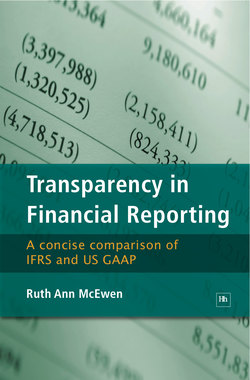Читать книгу Transparency in Financial Reporting - Ruth Ann McEwen - Страница 9
На сайте Литреса книга снята с продажи.
C. Hierarchy of inputs: example
ОглавлениеFor example, assume that an entity must value an asset or liability using Level 3 inputs in a mathematical model. If a model such as present value is used, the entity must estimate:
(a) future cash flows,
(b) the variability in timing and amount of cash flows under differing circumstances and the likelihood of those circumstances,
(c) the price that marketplace participants demand for bearing the uncertainty inherent in those cash flows, and
(d) the time value of money.
In determining these components, value is defined by the assumptions about estimated cash flows that the external parties would make. Level 3 inputs, then, require extensive estimates based on externally-based estimates.
Consider valuation for contingent consideration under US GAAP and IFRS (FAS 141R and IFRS 3R). In certain settings, both require initial recognition at acquisition of the consideration at fair value and both require remeasurement at each reporting date until the contingency is resolved. Under US GAAP, fair value must reflect markets while IFRS entities may use entity-specific estimates. Thus, if Smith Company enters into a purchase agreement in which an earn-out clause will net Brown Company a $5 million payment and 5% of net sales for Product A contingent upon successfully defending a patent, then, at the acquisition date, Smith Company must estimate the fair value of the contingent liability. The fair value of the contingency is based on estimates of the likelihood that the defence will be successful and estimates of the cash flows from future sales of Product A.
Under FAS 157, Smith should maximize the use of observable inputs when possible. In the current setting, estimating the liability requires Smith to estimate a subjective probability distribution for each of a series of questions addressing the likelihood of defending the patent and estimates of future cash flows. For example, Smith might estimate: (1) the probability of defending the patent, (2) market sales once the patent issue has been resolved, (3) the probability that Product A will become technologically obsolete, and (4) the probability that future patent actions may reduce sales.
Smith must then use these probability weighted estimates in estimating future cash flows associated with Product A. Brown Company risks are included in the expected value of the cash flows. Since the earn-out will occur over several years, Smith must discount the expected cash flows by a risk adjusted discount rate. One choice for this rate might be the industry weighted average cost of capital. The liability would be the probability weighted cash flows (expected values) discounted at an industry cost of capital. Smith would need to remeasure the contingent liability at each reporting date.
